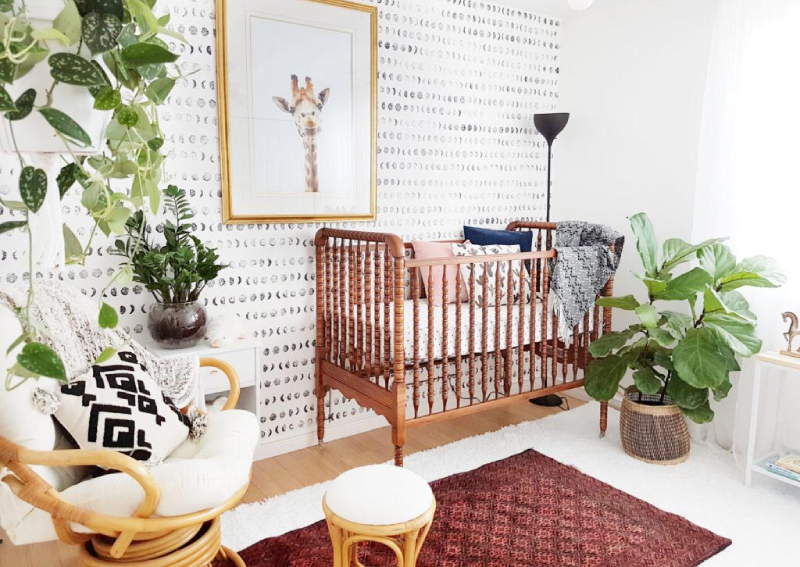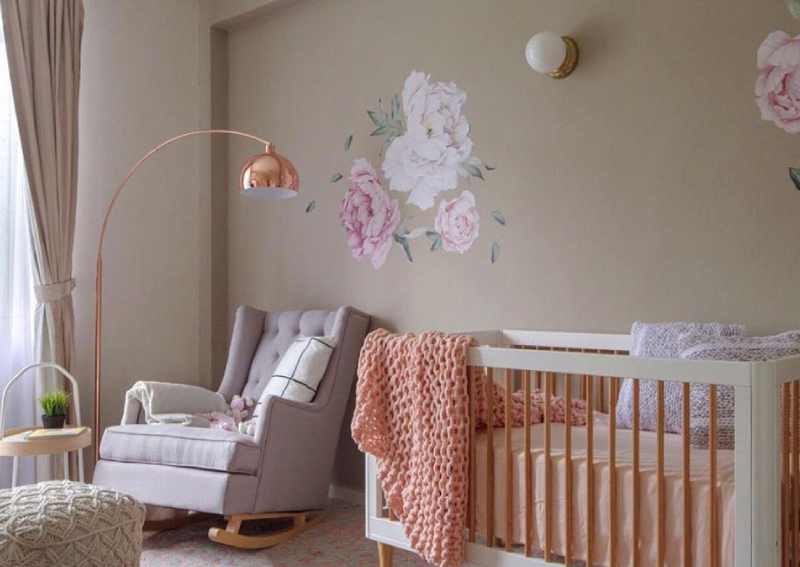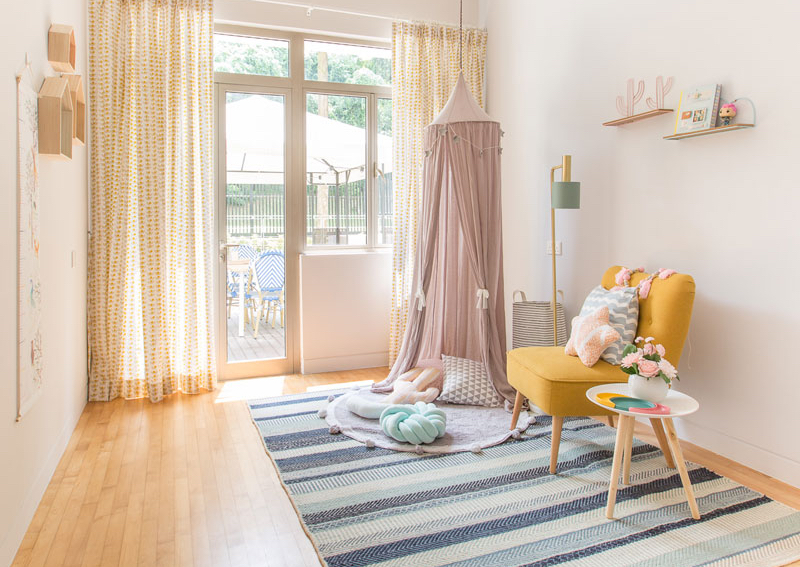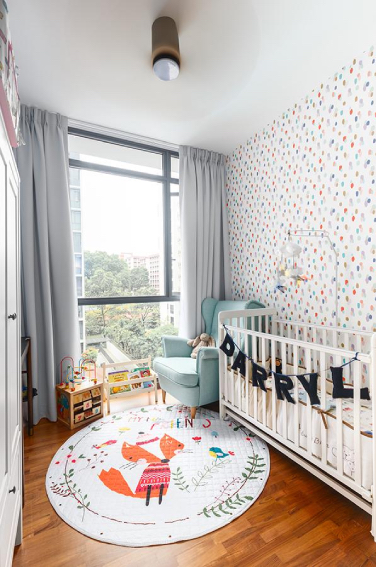8 tips to designing a nursery to welcome your first baby (and resources!)


A dedicated nursery can function as a convenient changing room and a storage area for all your baby things — and we know that there will be many.
Having a space your baby can call their own also means it will make for an easier transition when the time comes for them to sleep on their own.
Need help to set up one? Here are the tips to doing up a functional, beautiful and comfortable nursery.

Before you start drawing up plans for your baby’s nursery, ask yourself if you will really need one in the first place. For instance, you might want your baby to sleep next to you in your own bedroom for the first six months at least.
Not having a nursery doesn’t make you a bad parent, despite what social media or parenting magazines would have you believe. It could just mean you don’t have the space or you just need to save more money now that you are going to have a baby.
Ask yourself if you really need a nursery before drawing up plans for one!
If you do decide to go ahead with one, make sure to start early and get help. You won’t believe the 101 things you have to do when you are going to have a baby, so get your nursery up and running way ahead of schedule.
You want to have time to source for things, and if you are going the DIY route, you will definitely want to start early.
Don’t do everything by yourself; rope in family and friends to help keep yourself sane.
Start early to get to this level of nursery chic.
When designing your nursery, make sure you don’t just think for the here and now.
Think ahead, because it’s likely the nursery will end up becoming your child’s bedroom when he or she grows up, and boy, do they grow up fast.
Standalone furniture rather than built-ins is a more sensible choice for the nursery as they can be sold off or given away when your child outgrows them.
Consider furniture that grows with them such as cots with adjustable heights that you can adjust when your child starts to sit up and later, stand.
Check out how this cot from Cuckoo adapts according to your child’s growing stage. If you can’t find what you want out there, get your nursery furniture customised by the folks at The Kids Carpenter.
Time flies and needs change, so don’t get anything too permanent for the nursery.
If you are looking at built-ins, go with a timeless design that not only meets the needs of your baby but also your growing child. When planning built-ins, make sure you leave enough room for a full-sized bed for when the time comes to switch out the baby cot.
Rather than splurge on brand names, think functionality and safety first when picking out nursery furniture. Stick to the basics rather than go for fancy specialised furniture.
Your baby will surpass the need and use for them very soon so you don’t want to spend more than necessary.

Neutrals are a safe bet for a nursery. Not only are they timeless, calming and easy to match furnishings, they aren’t going to impose any unnecessary gender norms on your susceptible child.
Plus, they make it easy to update or paint over once said child starts to have an opinion about paint colours.
Even while going with a neutral colour scheme, you can still make things fun. Use wallpaper, murals, wall decals or framed prints to create a sense of wonder and adventure.
There is a whole range of nursery-friendly prints from Hello Circus you can choose from. They can be easily removed when your child outgrows them.
Don’t forget to paint your ceiling since that’s the one wall your baby will look at most of the time.
When choosing paint, get ones that can be easily wiped down. You will thank your past self for future proofing your room once your toddler starts to crawl and hold on to crayons.
Make sure you get paints that are labelled VOC free — free from toxic gaseous and vapour compounds — to keep you and baby safe and healthy.

You will likely be spending a lot of time in the nursery, for feeding, changing diapers and helping baby go to sleep, so do set aside an area where you can rest. It could be a bay window cushioned area or just a simple armchair by the corner of the room.
Incorporate soft furnishings to soften the edges in the room, but be sure to keep them away from baby — you don’t want to accidentally smother them.
A rug can help to provide some soft underfoot, and it also lends some extra cushion if you need to walk to put baby to sleep.
Place an anti-slip pad underneath your rug to prevent it from moving around, which is especially important if your room is decked in a slippery flooring material like laminate or glossy tiles. The rug also helps to cushion falls in the future.
For easy cleaning and maintenance, make sure you go for a machine washable rugs like the soft-plastic rugs from Sweden brand Pappelina, available at Journey East.

In the midst of your decorating, you want to keep safety at the foremost of your mind.
Avoid hanging anything heavy on walls over where your baby is sleeping. Keep hazardous objects and liquids out of reach from your baby’s grabbing hands. Get a cot that has fixed sides to avoid accidental injuries.
Don’t wait to baby proof the rest of your room, thinking you’ll have all the time in the world before your tyke starts crawling. You don’t. Start early to prevent accidents.
Plan to conceal electrical cords and cover power outlets around the nursery. Don’t place climbable furniture near windows.
Avoid furnishings made from materials that are easily breakable or have sharp edges.
Anchor down tall furniture like dressers or storage pieces on walls to prevent them from toppling over.

A functional nursery should have an efficient changing station.
You could get a dedicated changing table like this one from IKEA or simply secure a changing pad atop a low dresser.
If the latter, make sure the height is one where you are comfortable placing and picking up your baby — you don’t want to be constantly bending your back.
Place a changing pad atop a dresser for a chic and storage-friendly diaper changing station.
Keep everything you need — alcohol-free wipes, tissues, diapers, laundry basket for dirty clothes, bin for used diapers, baby lotion, etc — within easy reach and immediately visible.
You don’t want to hunt for your supplies while managing a squirming baby. Keep extra supplies in closed drawers to manage the clutter.
Also keep a few cleaning supplies at hand — changing your baby’s diaper can be a messy affair.

Babies accumulate a lot of things over time, so you’ll want to make sure you plan for enough storage when you are doing up your nursery.
Clutter is unsightly and can also be hazardous — you don’t want to trip over something while you are walking your baby to sleep.
A mix of open and closed storage gives you more options and flexibility, allowing you to change things up as your child grows.
Shallow open shelves on walls are great for displaying books and can add a little personality to the room.
Make room for child-height storage so your child can help with keeping away their own toys when they get older.
This modular bookshelf available at Kuhl Home comes in a variety of configurations you can build to your needs.

Lighting is always important in any interior setting, but it is especially so in a nursery.
You don’t want to choose lights that are too harsh or bright, such as ones that have exposed bulbs. These can be too glaring for your baby, who is still developing their vision.
Choose a soft, gentle glow or get a dimmer for your main light, which can make the adjustment between day and night less stimulating.
Night lights (get a load of these adorable ones from Deer Industries) are a good secondary lighting option. They can calm down a baby who is still getting used to sleeping on their own, and they are perfectly suited for night-time feeding.
Try to steer clear from floor lights or table lamps. These have cords lying about that your baby can potentially pull, making them dangerous.
Your nursery should be capable of staying dark too so that your baby can nap properly even during daytime. Invest in blackout blinds and curtains to keep daylight from entering into the room.
A final piece of advice for doing up your first nursery?
Don’t stress it. You don’t need to have it look perfect all at once.
No one, lest your own baby, will judge you for having a shabby nursery.
This article was first published in Renonation.